Country
Crash of a Swearingen SA226AT Merlin IV in Manchester: 1 killed
Date & Time:
Dec 10, 2021 at 2330 LT
Registration:
N54GP
Survivors:
No
Schedule:
Fairfield – Manchester
MSN:
AT-34
YOM:
1975
Flight number:
CSJ921
Crew on board:
1
Crew fatalities:
Pax on board:
0
Pax fatalities:
Other fatalities:
Total fatalities:
1
Captain / Total hours on type:
118.00
Aircraft flight hours:
10633
Circumstances:
During an instrument approach at night in a twin-engine turboprop airplane, the pilot reported an engine failure, but did not specify which engine. About 9 seconds later, the airplane impacted terrain about ¼-mile short of the runway and a postcrash fire consumed a majority of the wreckage. During that last 9-second period of the flight, the airplane’s groundspeed slowed from 99 kts to 88 kts, as it descended about 400 ft in a slight left turn to impact (the airplane’s minimum controllable airspeed was 92 kts). The slowing left turn, in conjunction with left wing low impact signatures observed at the accident site were consistent with a loss of control just prior to impact. Postaccident teardown examination of the left engine revealed that the 1st stage turbine rotor had one blade separated at the midspan. The blade fracture surface had varying levels of oxidation and the investigation could not determine if the 1st stage turbine blade separation occurred during the accident flight or a prior flight. The 2nd stage turbine was operating at temperatures higher than the 1st stage turbine, which was consistent with engine degradation over a period of time. Additionally, the 2nd stage turbine stator assembly was missing vane material from the 6 to 12 o’clock positions, consistent with thermal damage. All of these findings would have resulted in reduced performance of the left engine, but not a total loss of left engine power. The teardown examination of the right engine did not reveal evidence of any preimpact anomalies that would have precluded normal operation. Examination of both propellers revealed that all blade angles were mid-range and exhibited evidence of little to no powered rotation. Neither propeller was in a feathered position, as instructed by the pilot operating handbook for an engine failure. If the pilot had perceived that the left engine had failed, and had he secured the engine and feathered its propeller (both being accomplished by pulling the red Engine Stop and Feather Control handle) and increased power on the right engine, the airplane’s performance should have been sufficient for the pilot to complete the landing on the runway.
Probable cause:
The pilot’s failure to secure and feather the left engine and increase power on the right engine after a perceived loss of engine power in the left engine, which resulted in a loss of control and impact with terrain just short of the runway. Contributing to the accident was a reduction in engine power from the left engine due to a 1st stage turbine blade midspan separation and material loss in the 2nd stage stator that were the result of engine operation at high temperatures for an extended period of time.
Final Report:
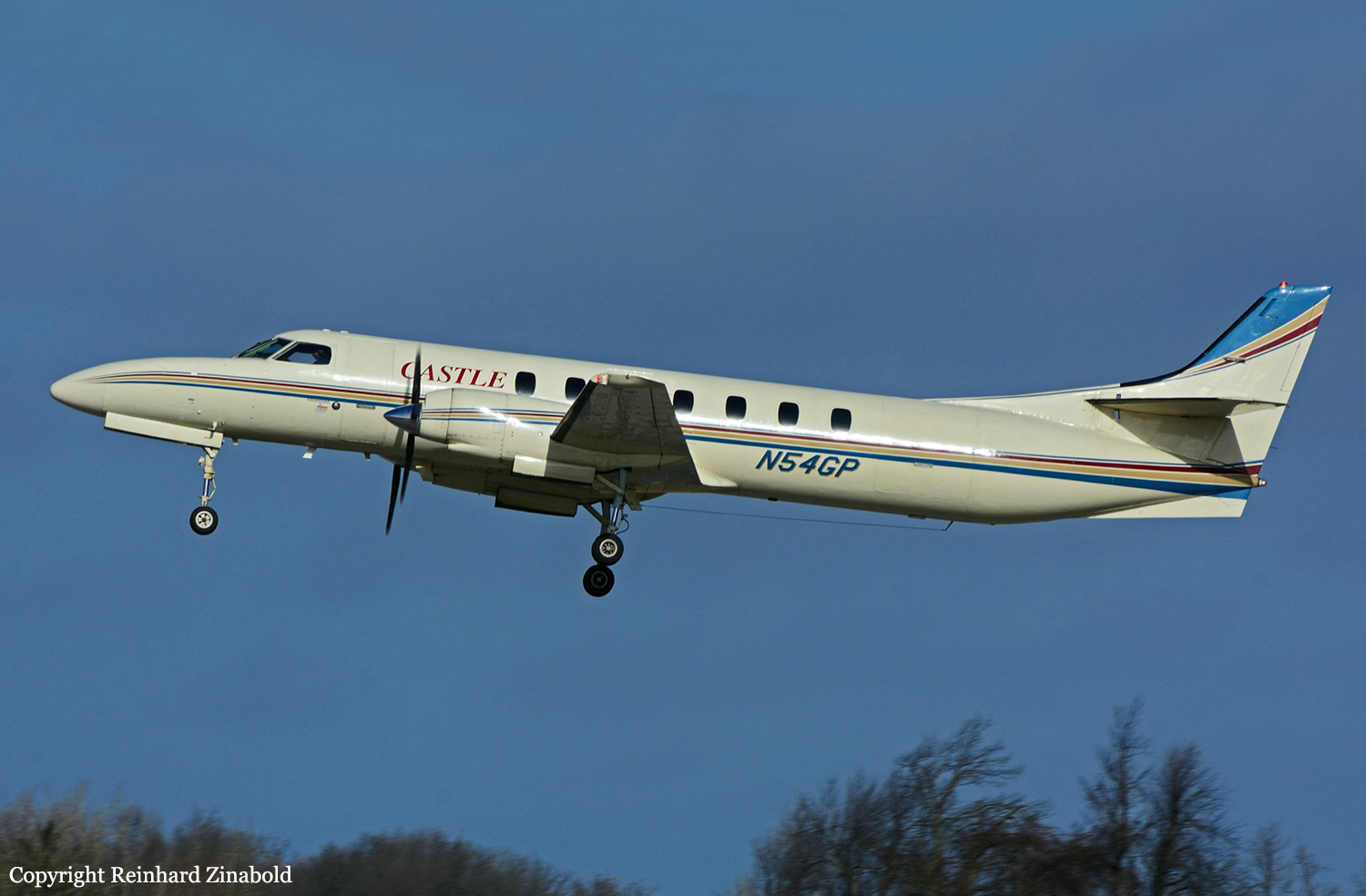
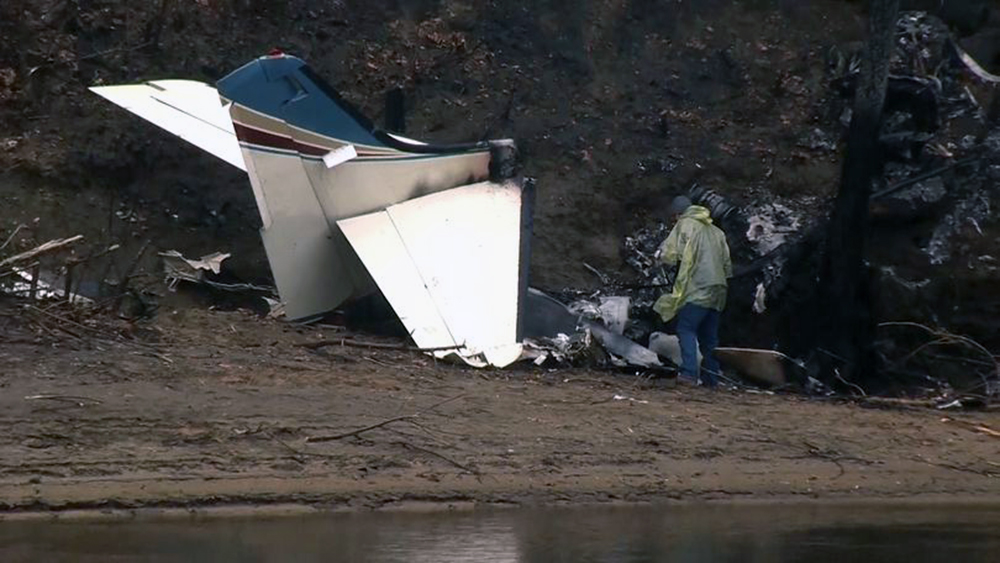
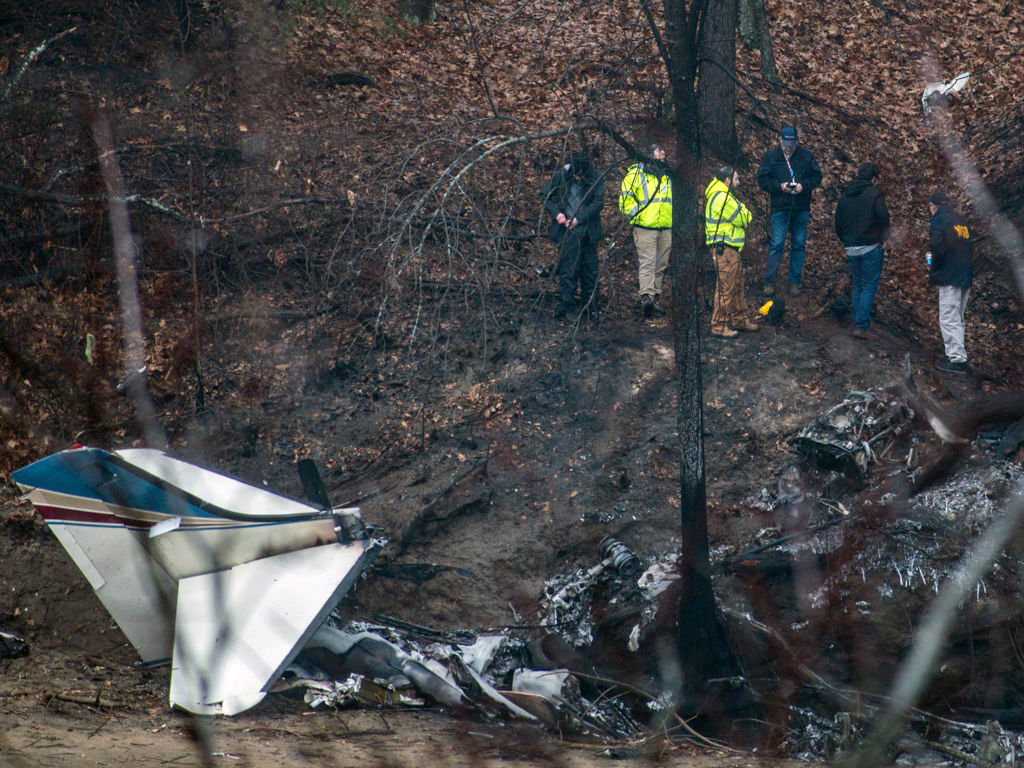
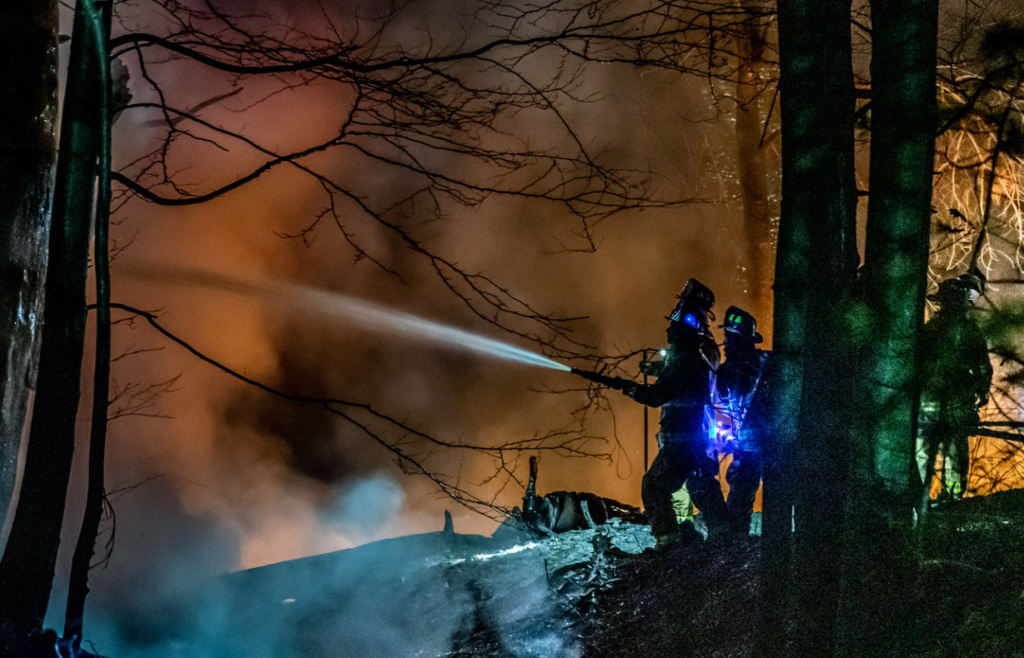
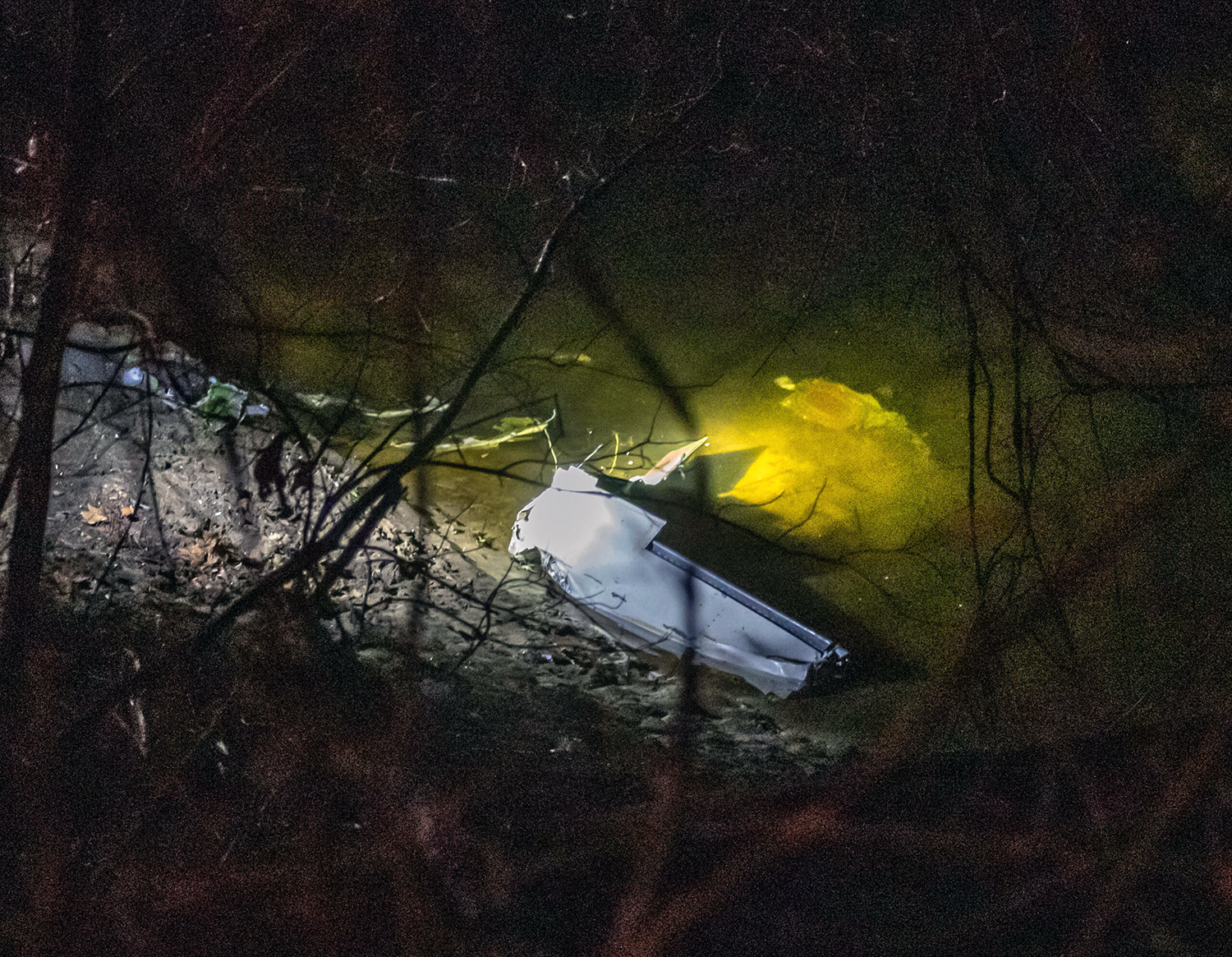
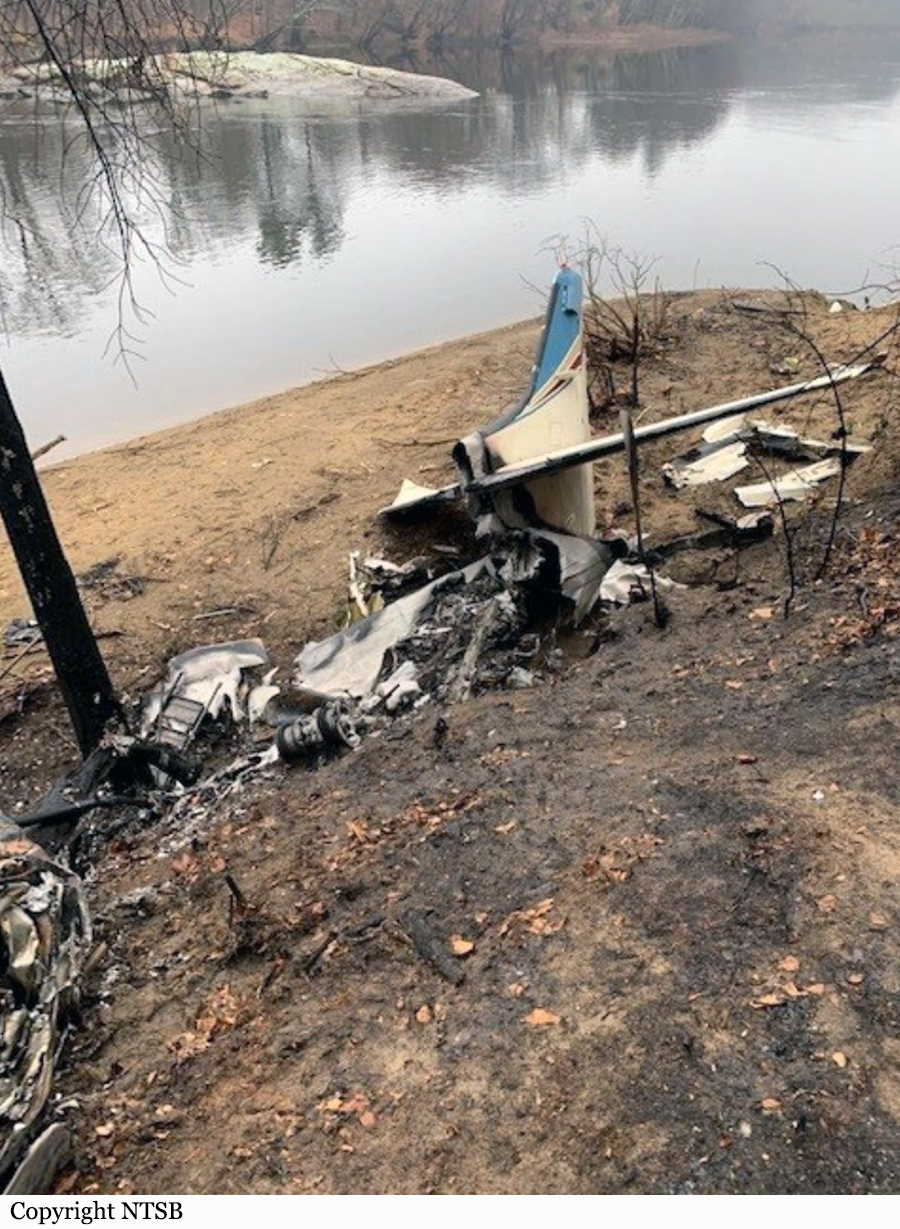
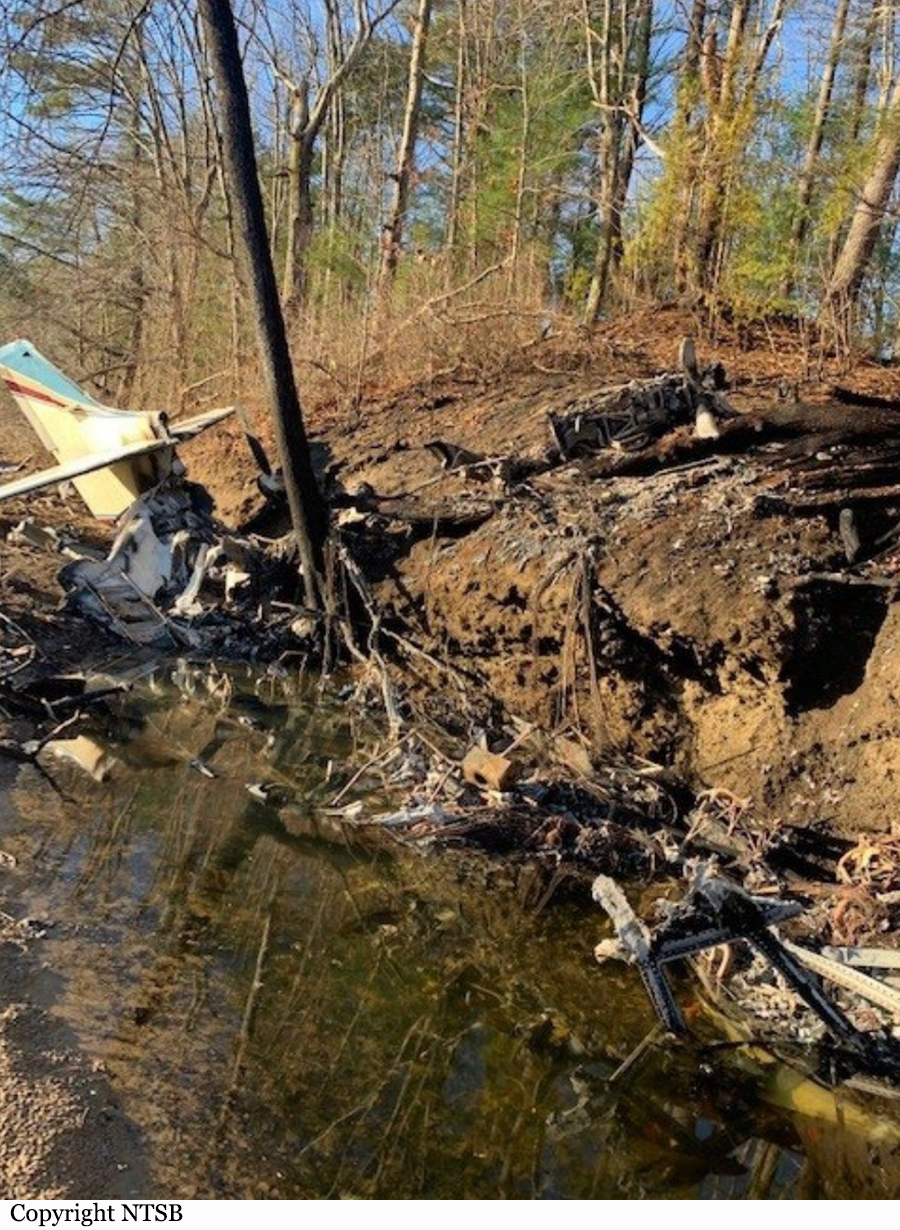
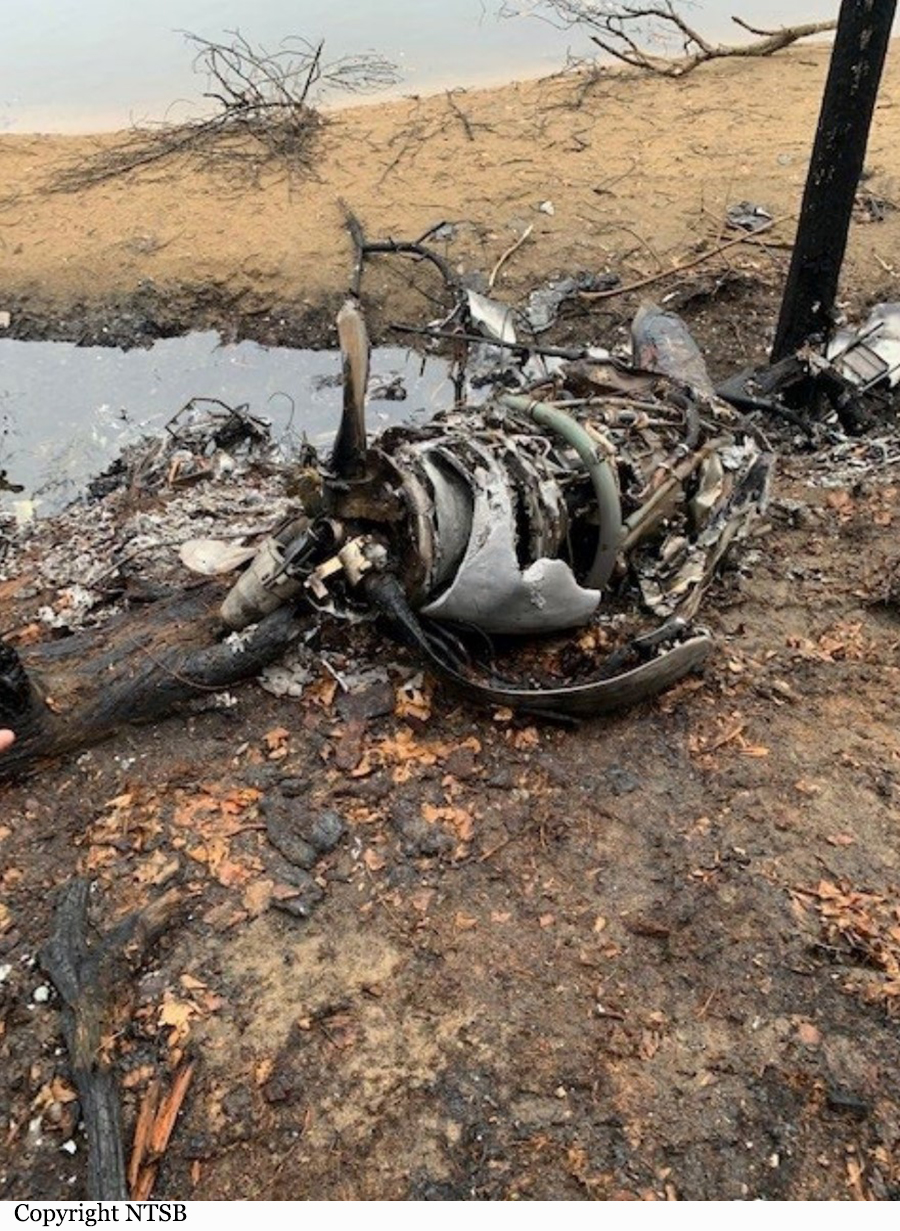
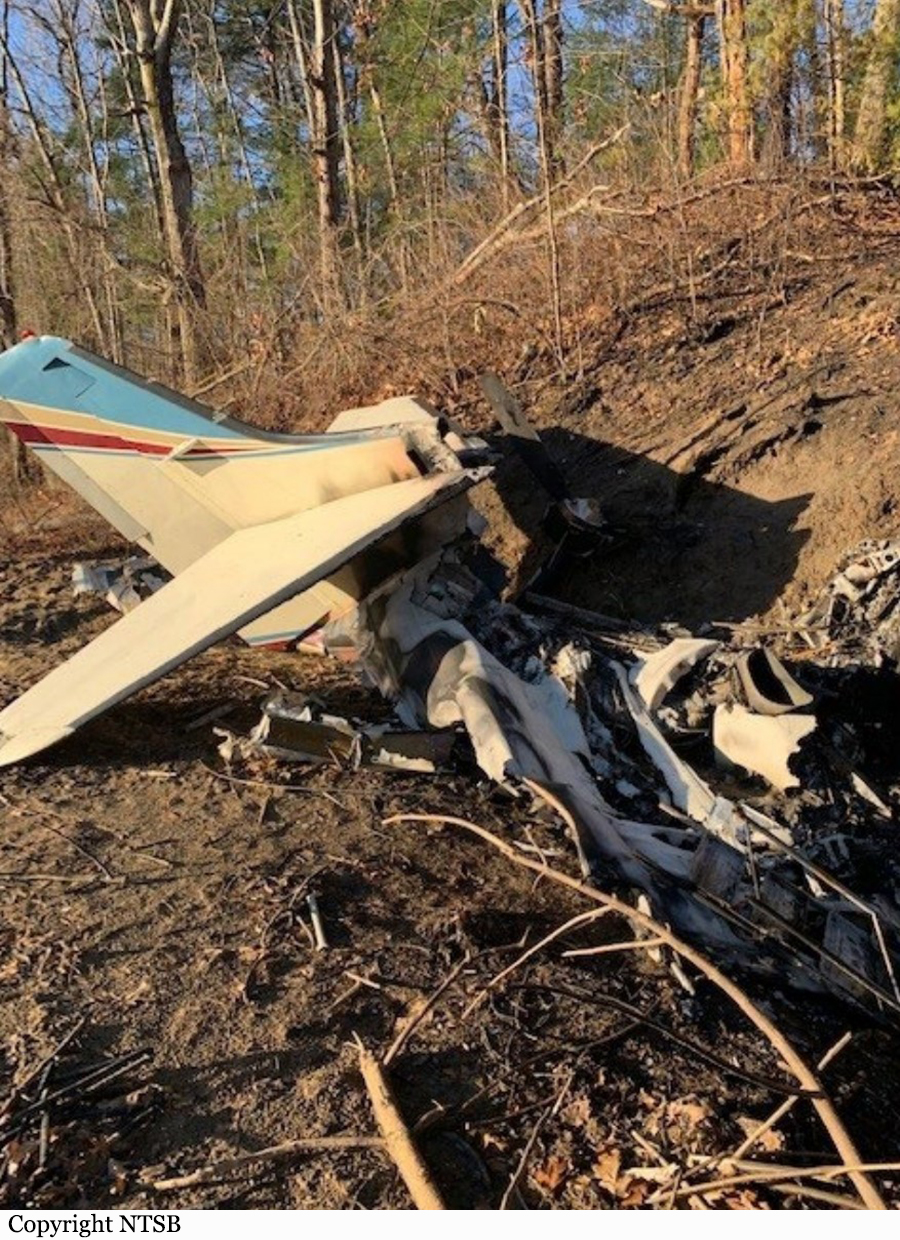
Crash of a Swearingen SA226AT Merlin IVA in Girona
Date & Time:
Apr 24, 2016 at 1520 LT
Registration:
EC-GFK
Survivors:
Yes
Schedule:
Girona - Girona
MSN:
AT-062
YOM:
1977
Crew on board:
2
Crew fatalities:
Pax on board:
0
Pax fatalities:
Other fatalities:
Total fatalities:
0
Captain / Total hours on type:
27.00
Copilot / Total hours on type:
6868
Aircraft flight hours:
16128
Circumstances:
The crew (one pilot under supervision and one instructor) departed Girona-Costa Brava on a local training flight. Following two successful landings and touch-and-go manoeuvres, the crew initiated a new approach to complete a full stop landing. The aircraft belly landed and slid for few dozen metres before coming to rest on the runway. Both pilots evacuated safely and the aircraft was damaged beyond repair.
Probable cause:
The cause of the accident was that the crew failed to actuate the lever used to deploy the landing gear. Inadequate presentation, in the operator's operating manuals, of the flight tasks to be performed by each crew member and the timing of these tasks is identified as a contributing factor.
Final Report:
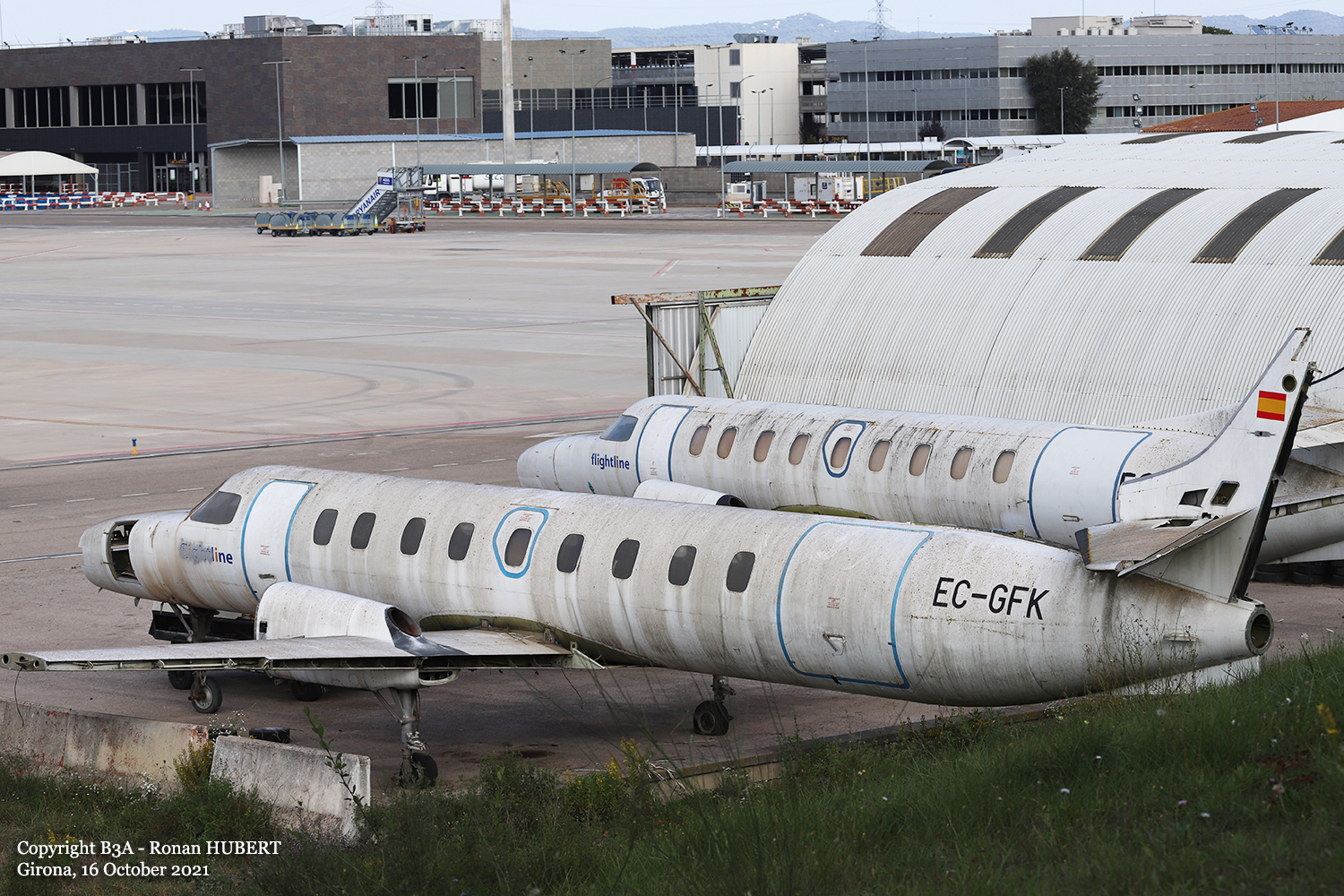
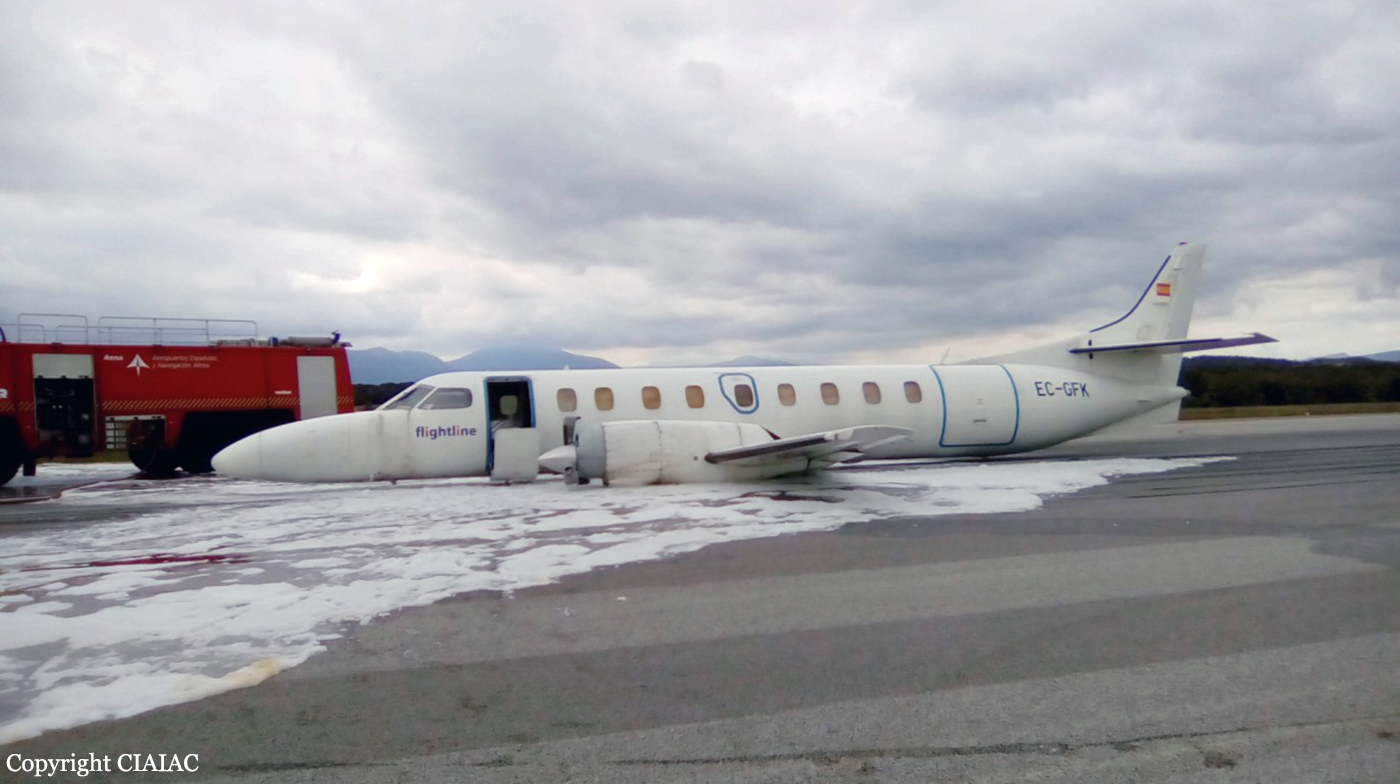
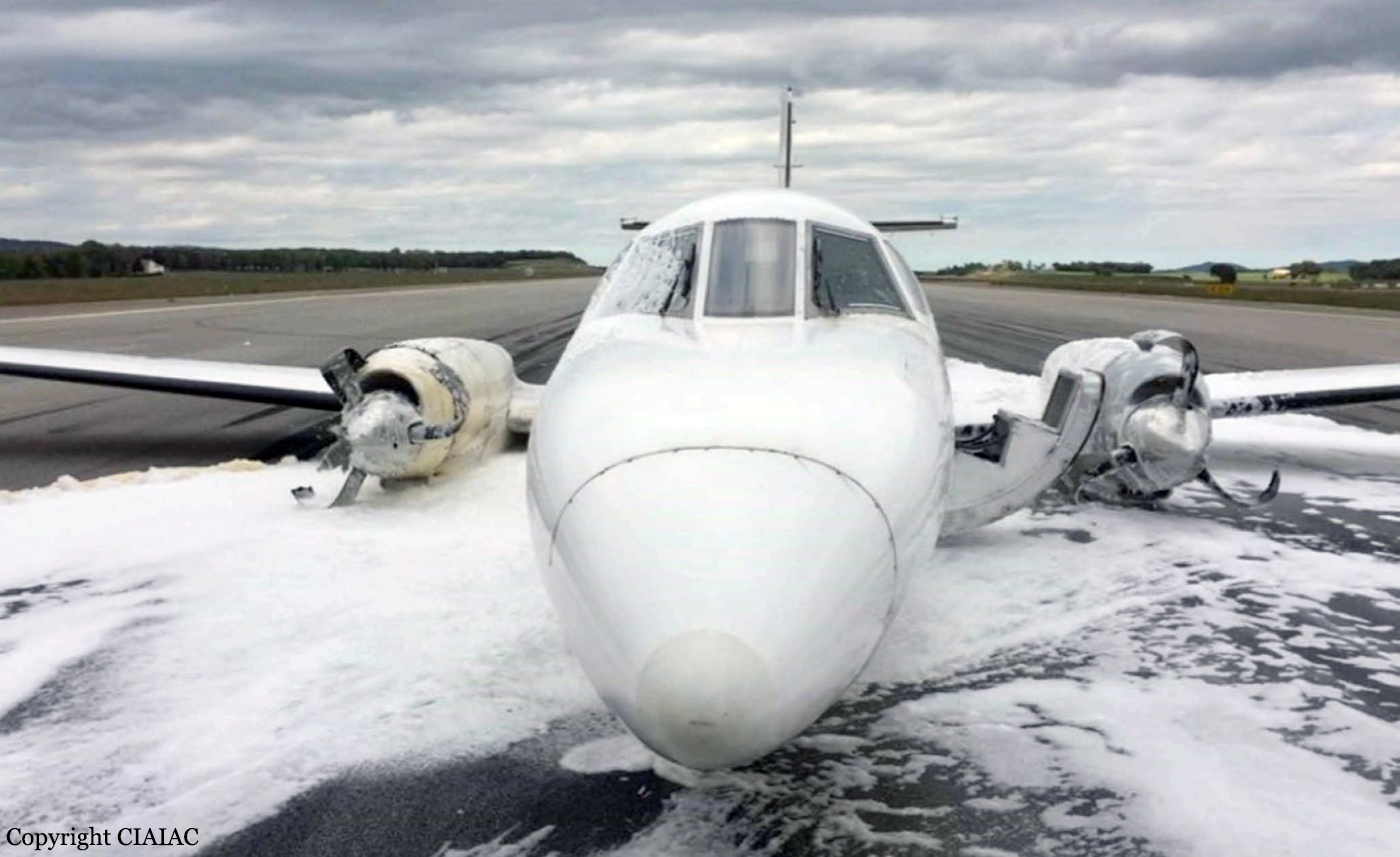
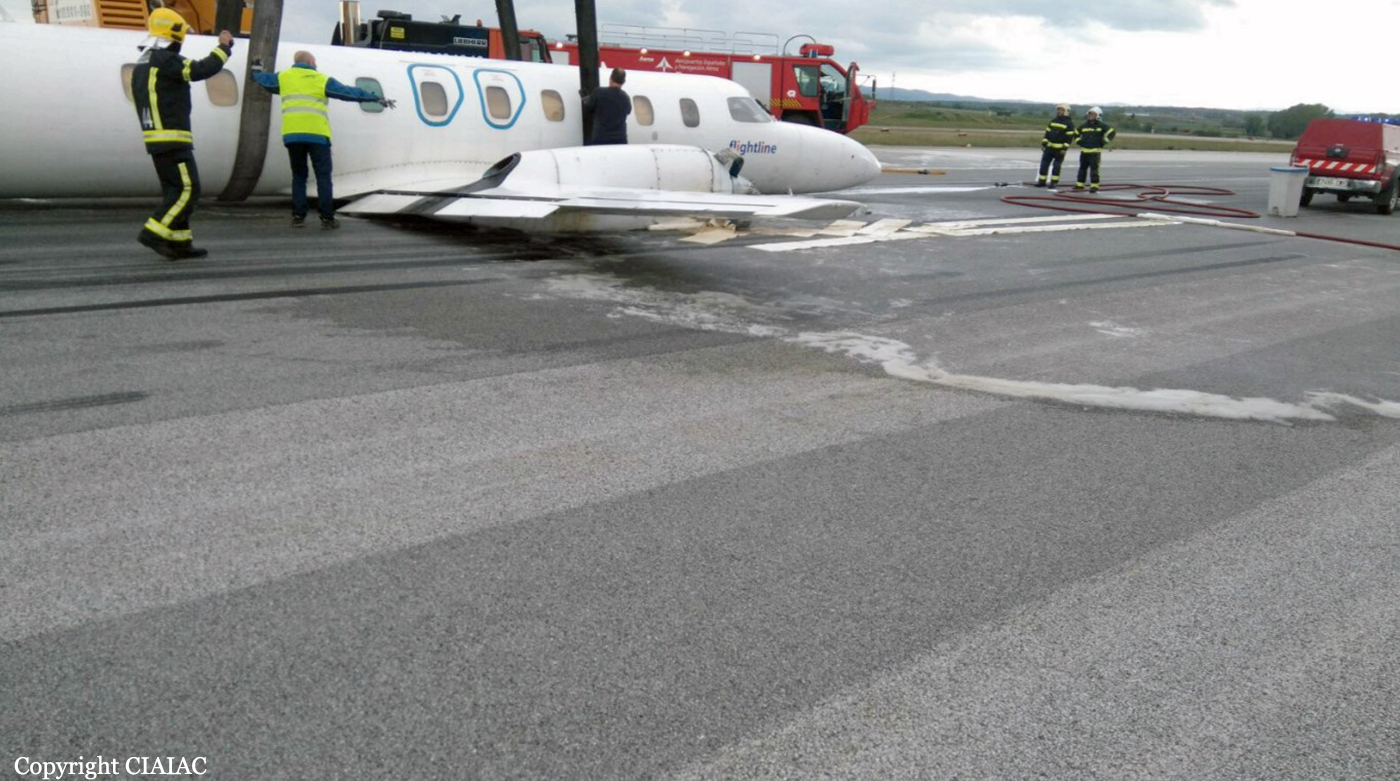
Crash of a Swearingen SA226AT Merlin IVA off Columbretes Islands: 10 killed
Date & Time:
Oct 10, 2001 at 1042 LT
Registration:
EC-GDV
Survivors:
No
Schedule:
Barcelona - Oran
MSN:
AT-043
YOM:
1976
Flight number:
FTL101
Crew on board:
2
Crew fatalities:
Pax on board:
8
Pax fatalities:
Other fatalities:
Total fatalities:
10
Aircraft flight hours:
11950
Circumstances:
The twin engine airplane departed Barcelona Airport at 1018LT on a charter flight to Oran, Algeria, carrying eight American businessmen and two pilots. En route, while cruising along the Spanish coast, the crew encountered poor weather conditions with thunderstorm activity, and was cleared to deviate from the prescribed flight plan to the east. Shortly later, the aircraft entered an area of heavy turbulences and was presumably struck by lighting, causing the electrical system to fail. The aircraft entered an uncontrolled descent and crashed in the Mediterranean Sea about 18 km northwest of the Columbretes Islands. Few debris were found floating on water and all 10 occupants were killed.
Probable cause:
Although the causes of the accident could not be determined, considering the circumstances in which it occurred and the history of similar events with aircraft of the same type, is considered that the probable cause of the accident was a total loss of the electrical system, caused by a lightning strike in the middle of the storm in which it was flying, without the crew being able to recover. It is possible that the lightning strike produced other damages to the airplane and/or could have induced or produced failures in other systems of the airplane. The set of these circumstances, aggravated by the storm, with strong rains and turbulence and the associated lack of visibility, lead to the impact of the airplane with the sea.
Final Report:
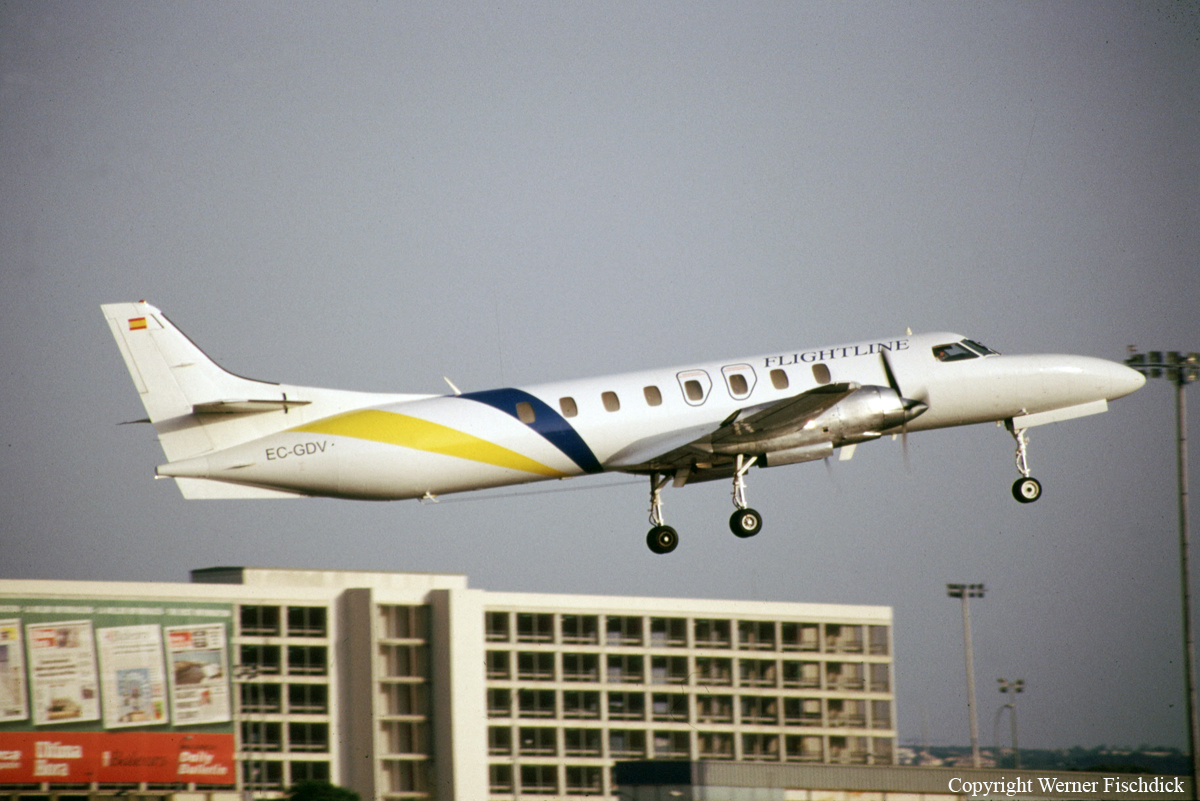
Crash of a Swearingen SA226AT Merlin IV in Kuujjuaq
Date & Time:
Sep 20, 2001 at 1757 LT
Registration:
C-GWSL
Survivors:
Yes
Schedule:
Kangiqsualujjuaq – Kuujjuaq
MSN:
AT-028
YOM:
1975
Flight number:
MAX226
Crew on board:
2
Crew fatalities:
Pax on board:
0
Pax fatalities:
Other fatalities:
Total fatalities:
0
Circumstances:
The approach to Kuujjuaq-Fort Chimo Airport was stable but slightly below the VASIS descent profile. Just before the flare when power was reduced to idle, the crew was surprised by how rapidly the aircraft decelerated. Touchdown on the runway was hard. After the engines were shut down at the terminal, the crew noted structural deformations around the nose wheel attachment point and on the wings, where the deformations caused fuel to leak. Runway 31 slopes upward 1.3%. The landing was made at twilight, and the runway environment appeared very dark to the crew due to the lack of reflection from the gravel surface.
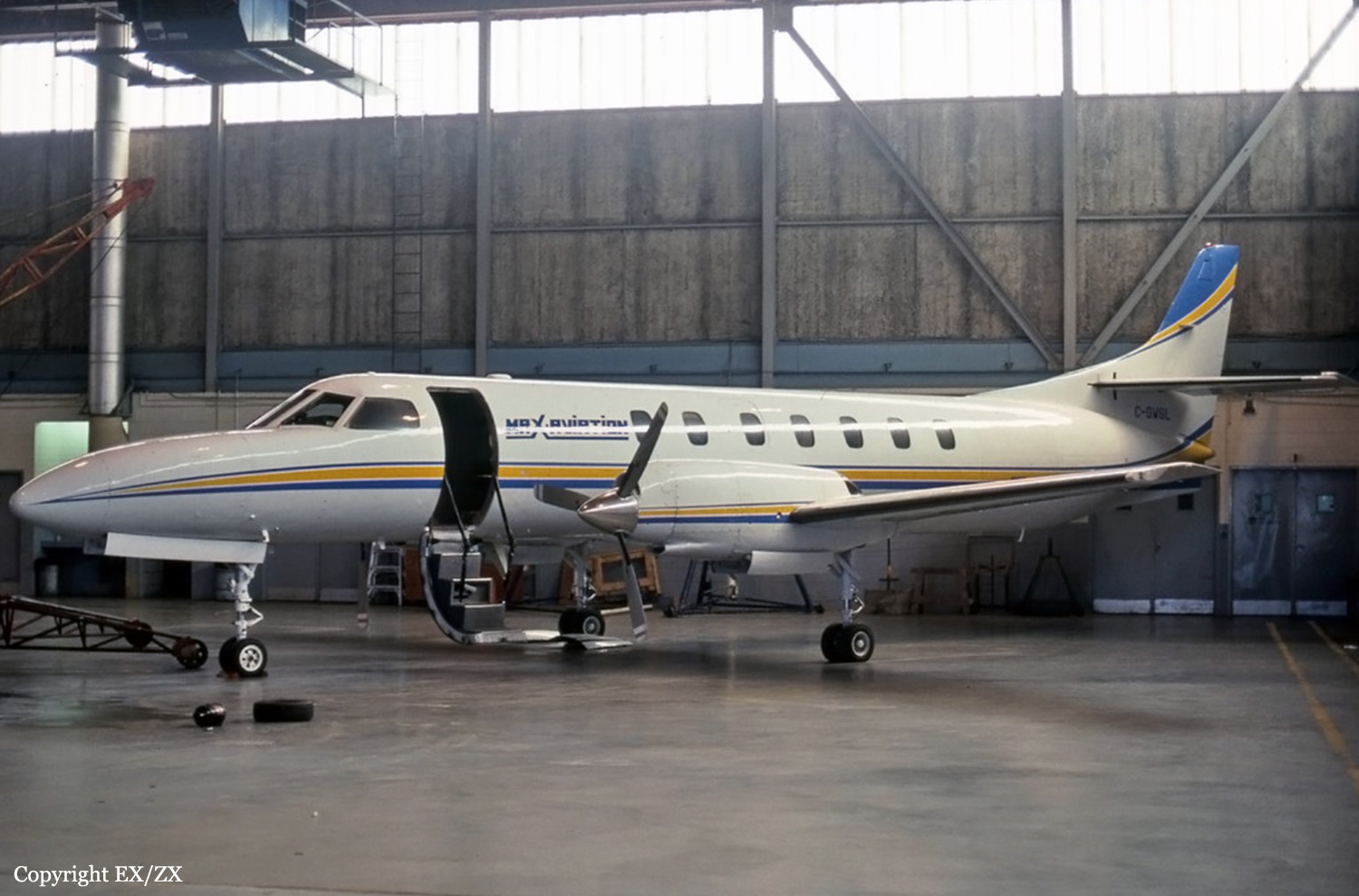
Crash of a Swearingen SA226AT Merlin IV in OIbia
Date & Time:
Jan 13, 1999
Registration:
I-NARC
Survivors:
Yes
MSN:
AT-035
YOM:
1975
Crew on board:
2
Crew fatalities:
Pax on board:
0
Pax fatalities:
Other fatalities:
Total fatalities:
0
Circumstances:
Damaged beyond repair following a landing accident at Olbia-Costa Smeralda Airport. Both pilots were uninjured.
Crash of a Swearingen SA226AT Merlin IV in Detroit
Date & Time:
Dec 15, 1995 at 0423 LT
Registration:
N31AT
Survivors:
Yes
Schedule:
Flint - Louisville
MSN:
AT-057
YOM:
1977
Crew on board:
1
Crew fatalities:
Pax on board:
0
Pax fatalities:
Other fatalities:
Total fatalities:
0
Captain / Total hours on type:
3977.00
Aircraft flight hours:
6965
Circumstances:
The pilot reported that shortly after takeoff, the airplane's left engine started to surge. The airplane also began experiencing intermittent electrical surges which caused the instrument panel lights, cabin lights, and radios to go off and on. The pilot diverted to an alternate airport to land. He did not secure the left engine before landing because it was still developing some usable power. He placed the gear select handle in the down position and observed three green gear-down-and-locked lights. Prior to touchdown, both power levers were positioned to flight idle and no gear warning horn sounded. The airplane landed gear up. Postaccident examination revealed no abnormalities with the landing gear or electrical system. The landing gear emergency extension functioned properly. The landing gear indicating system showed a safe gear indication when the gear was extended during examination. Substantial damage to the gear doors was observed, but no damage to the landing gear was observed.
Probable cause:
The pilot's failure to extend the landing gear. A factor in the accident was the pilot's diverted attention.
Final Report:
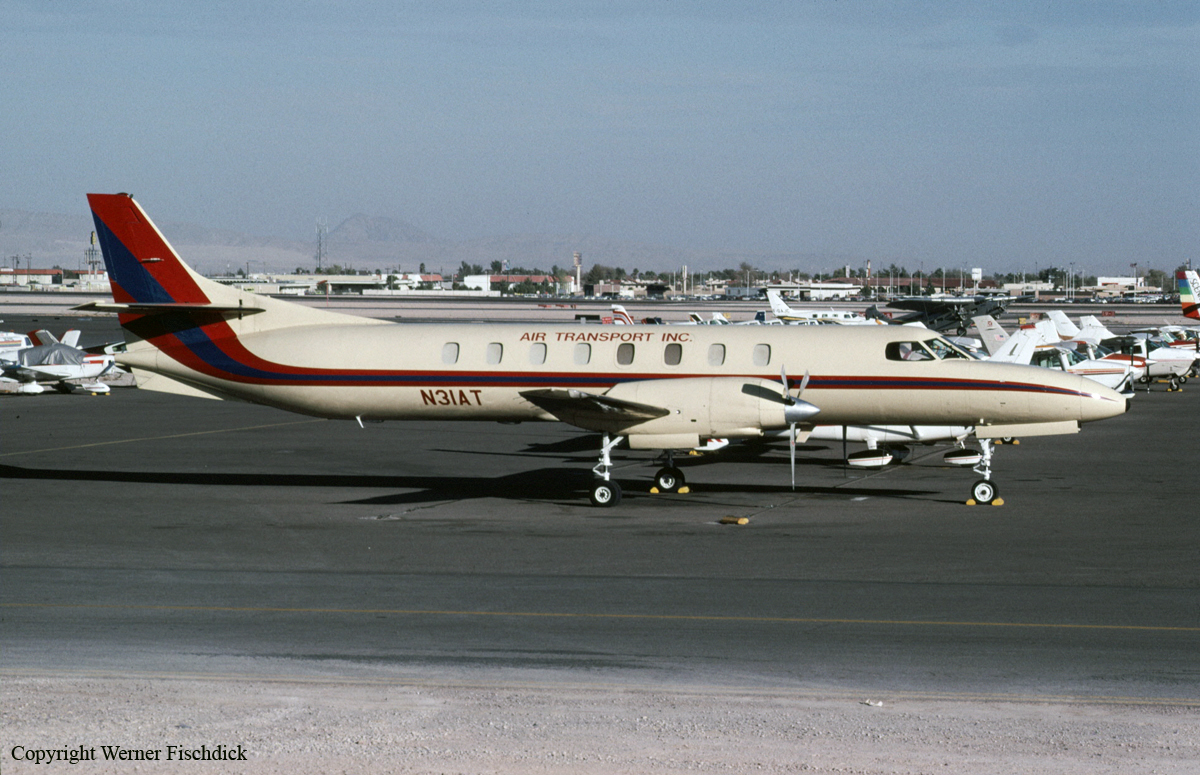
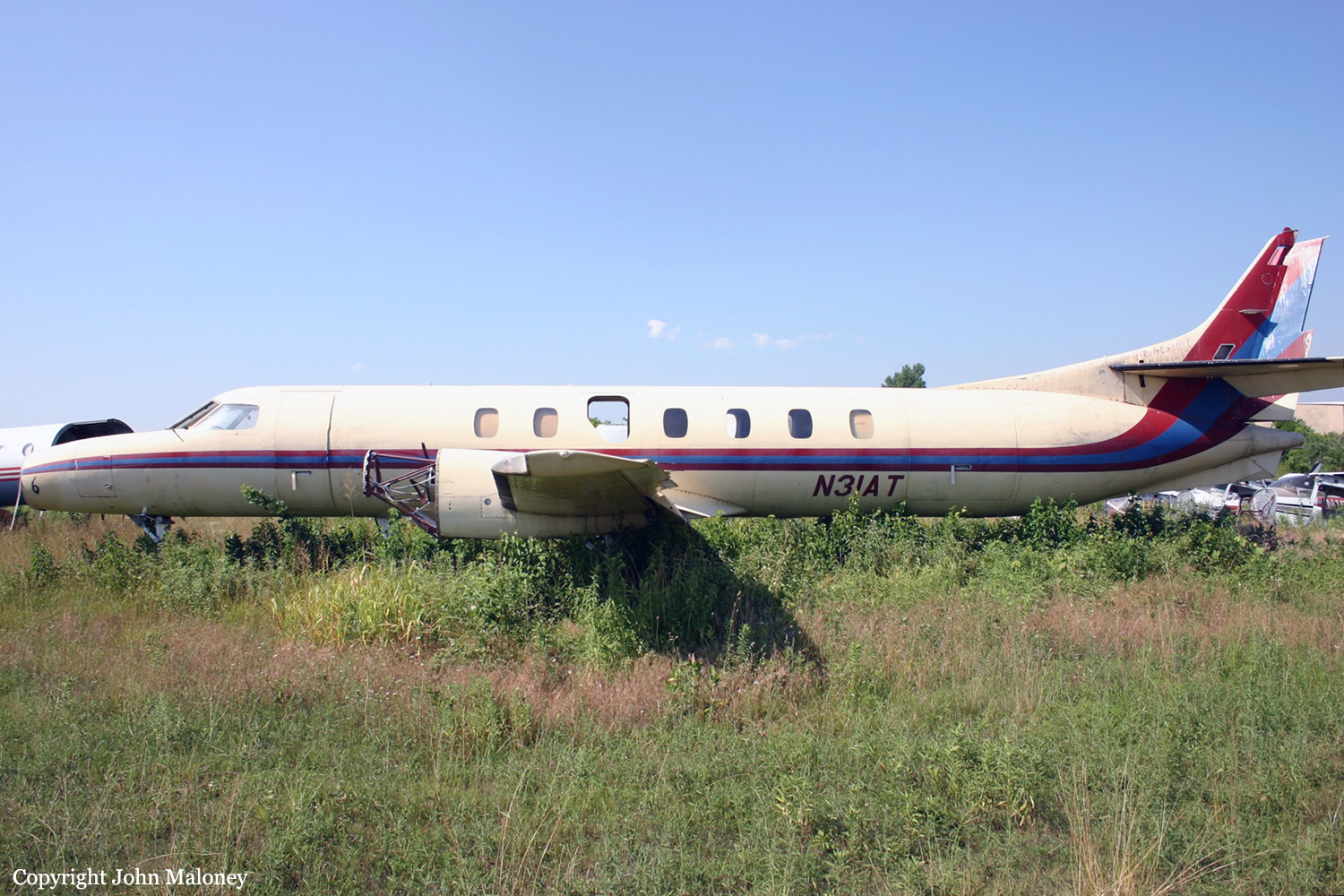
Crash of a Swearingen SA226AT Merlin IV in Pointe-Noire
Date & Time:
Mar 11, 1994
Registration:
TN-ADP
Survivors:
Yes
Schedule:
Port Gentil - Pointe-Noire
MSN:
AT-025
YOM:
1974
Crew on board:
2
Crew fatalities:
Pax on board:
4
Pax fatalities:
Other fatalities:
Total fatalities:
0
Circumstances:
Following a visual approach to Pointe-Noire Airport runway 17, the twin engine airplane belly landed and skidded on runway for about 250 metres before coming to rest. All six occupants escaped uninjured while the aircraft was damaged beyond repair.
Probable cause:
It was determined that the approach speed was excessive and that the flaps were deployed in an inappropriate angle. On descent, the crew failed to follow the approach checklist and forgot to lower the undercarriage. After the landing gear alarm sounded just prior to the flare, the crew elected to initiate a go-around procedure but it was obviously too late.



